1. Hanging Gardens - Just north of Page on US-89 is a gravel turnoff on the right-hand side of the road. Follow the gravel road about 500 yards to the trailhead for Hanging Gardens where an easy, one-mile round-trip hike will take you to a lush oasis in the middle of an arid desert. Some 35 species of plants cling to the top and side of the moisture-dripping, spring-fed rock tucked inside an overhang. It was a welcome respite the afternoon we were there - a great place to sit a spell and think.
The hike to the Hanging Gardens has some breath-taking panoramic views of Lake Powell and Glen Canyon in the distance!
2. Cliff Dwellings - In 1929, a Ziegfeld Follies dancer from back east named Blanche Russell was traveling through Marble Canyon north of the recently completed Navajo Bridge with her husband, Bill, who had recently been diagnosed with tuberculosis. They were moving to the southwest where they hoped the drier climate would be better for Bill's health. Their car broke down forcing them to "camp" overnight and in the light of the morning, Blanche decided that she liked the scenery and bought the property. They built a lean-to against one of the boulders that had broken off the cliff above and settled on soft sandstone which gradually eroded away underneath the boulder leaving crevices and odd-shaped formations. They served food to passers-by in exchange for labor to build their house with the boulder. This ultimately led to a full-fledged restaurant and a hand gasoline pump which meant more buildings, all completed in the early 1930's. The dwellings remain on private property (although visitors are welcome) and have been vacant for the last half century. It started raining while we were there so we sought shelter in one - and stayed relatively dry!
Remember the house that Practical Pig built? These would have been just as wolf-proof!
3. Balanced Boulders (or Balanced Rocks) - The giant boulder appears to have been placed perfectly balanced on its pedestal near Lees Ferry. In reality, a very long time ago the boulder of conglomerate rock broke off the cliffs high above and rolled down the slope until it stopped. The much softer rock it landed on has eroded away much more quickly than the conglomerate boulder forming a pedestal. The pedestal will continue to erode more quickly and one day the boulder will topple over again where the process will be repeated. Eventually weathering will break down the conglomerate boulder leaving a pile of rocks like others seen nearby. The same process is occurring along the top of the cliffs in the area; softer rock erodes away leaving precariously perched overhangs of harder rock that will someday break off and roll down the slope - a process called "cliff retreat."
The surreal lanscape looks more like a sci-fi movie set than it does a natural process!
4. Rainbow Bridge - This magnificent natural wonder, the largest natural bridge in the world, is located in Utah on the Navajo Reservation and is a sacred site for five Native American nations. The bridge was formed by water flowing from Navajo Mountain to the Colorado River eroding the sandstone. It was "discovered" in 1909 by the Douglas-Cummings Surveyor party and in 1910, President Taft declared it a National Monument. At that time, the only way to reach it was climbing/hiking several miles up Bridge Canyon from the bank of the Colorado River making it one of the most remote and inaccessible places in the country. In 1963, the gates on Glen Canyon Dam closed and the rising Lake Powell began to engulf the Colorado River and the side canyons with their rivers and streams. Soon Rainbow Bridge was accessible by boat with a very short, level hike and visitation to the monument exploded. Lawsuits were filed by Native American nations against the U.S. Department of the Interior but the courts ruled that closing Rainbow Bridge National Monument to the public for Navajo religious ceremonies would violate the U.S. Constitution which protects the religious freedoms of all Americans. Compromises were made restricting crowds as well as being respectful of the Native American beliefs. We took a two and a half hour boat ride maneuvering narrow channels in small canyons to get to the dock where we walked about a half mile to Rainbow Bridge.
Photos cannot do justice to this impressive formation - it is higher than the U.S. Capitol Building and nearly as long as a football field. The top of the arch is 42 feet thick and 33 feet wide! Having a person stand underneath it would give perspective but Navajo tradition forbids it.
While we left on our trip with a list and a plan, being spontaneous allowed us to see some really unusual sights (and sites!). It is becoming apparent to me that one could never see all there is to see in Arizona - or probably any state. And for the record, all four of these get a big THUMBS UP!
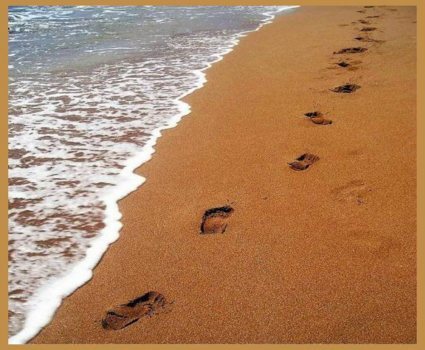
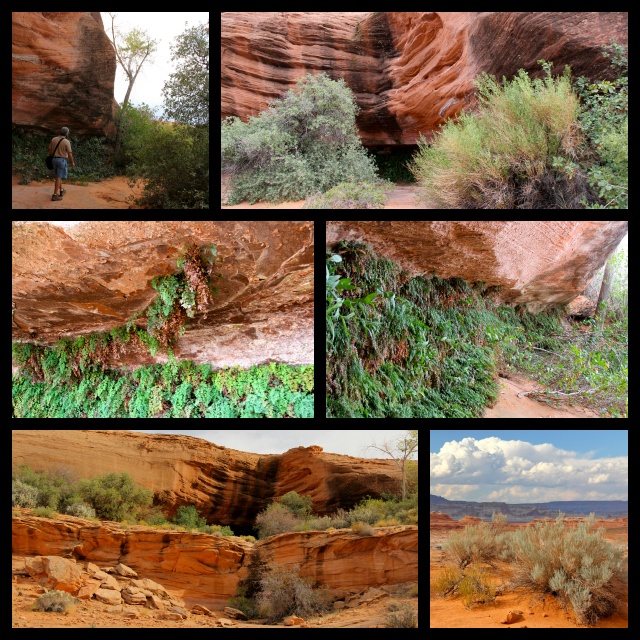
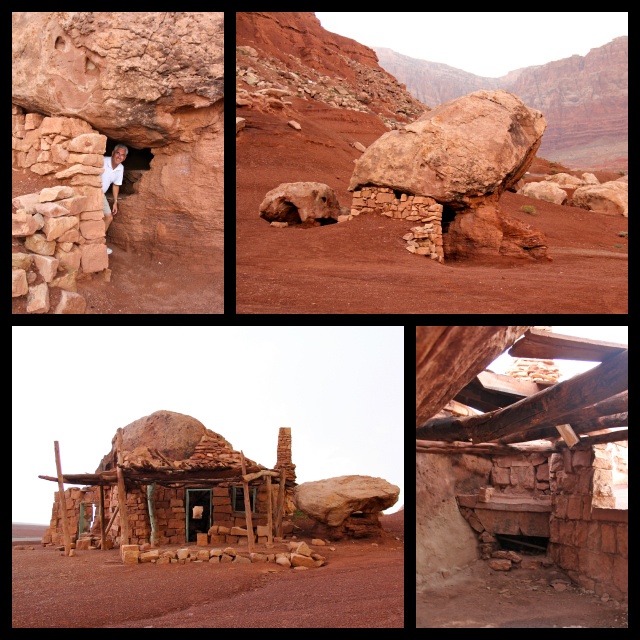
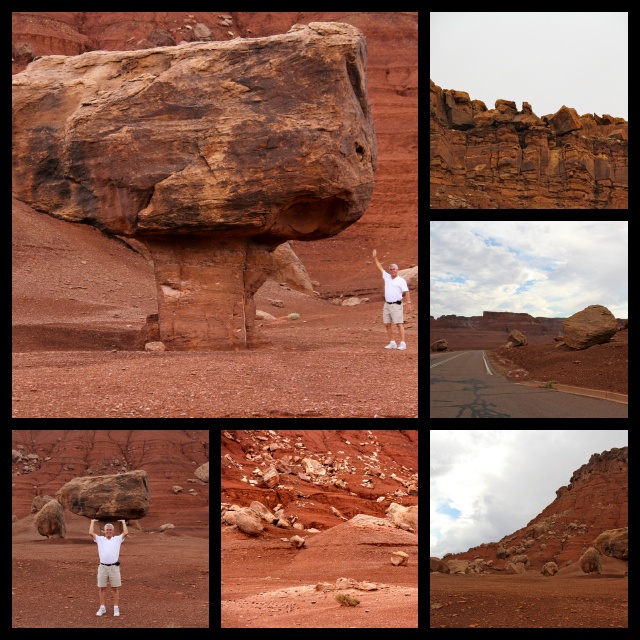
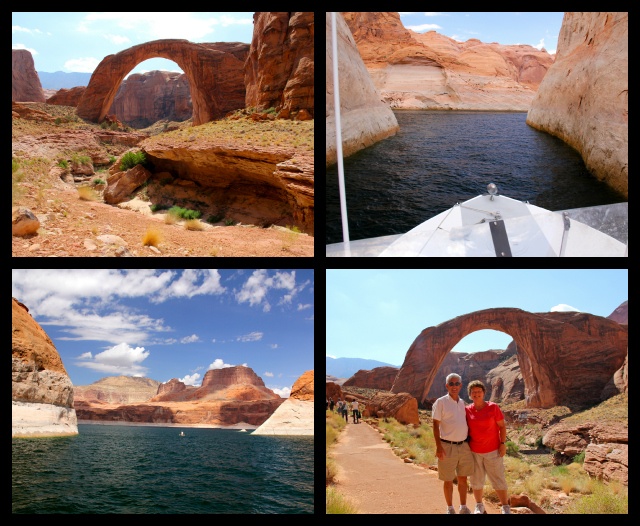
No comments:
Post a Comment